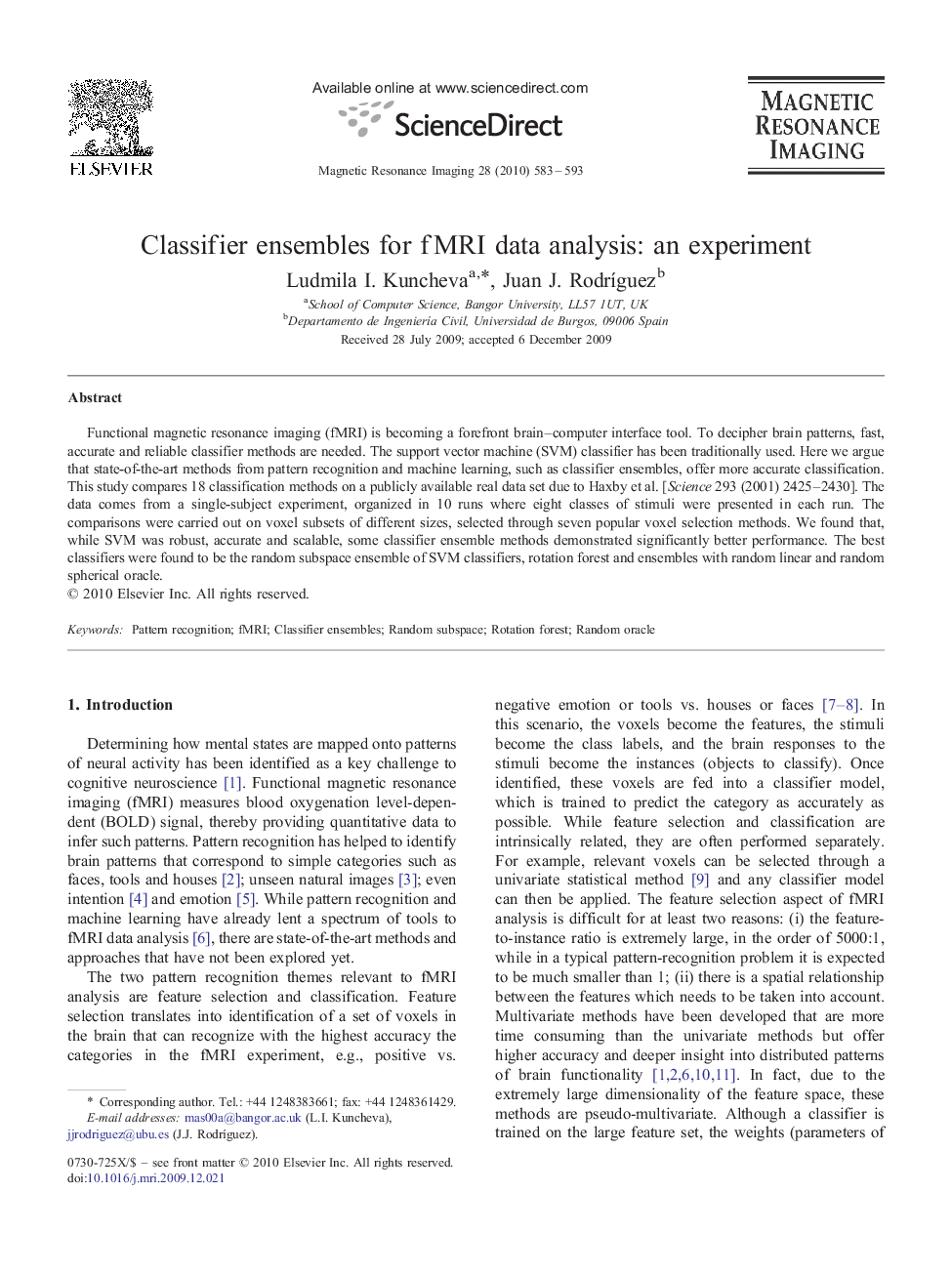| Article ID | Journal | Published Year | Pages | File Type |
|---|---|---|---|---|
| 1807116 | Magnetic Resonance Imaging | 2010 | 11 Pages |
Functional magnetic resonance imaging (fMRI) is becoming a forefront brain–computer interface tool. To decipher brain patterns, fast, accurate and reliable classifier methods are needed. The support vector machine (SVM) classifier has been traditionally used. Here we argue that state-of-the-art methods from pattern recognition and machine learning, such as classifier ensembles, offer more accurate classification. This study compares 18 classification methods on a publicly available real data set due to Haxby et al. [Science 293 (2001) 2425–2430]. The data comes from a single-subject experiment, organized in 10 runs where eight classes of stimuli were presented in each run. The comparisons were carried out on voxel subsets of different sizes, selected through seven popular voxel selection methods. We found that, while SVM was robust, accurate and scalable, some classifier ensemble methods demonstrated significantly better performance. The best classifiers were found to be the random subspace ensemble of SVM classifiers, rotation forest and ensembles with random linear and random spherical oracle.
